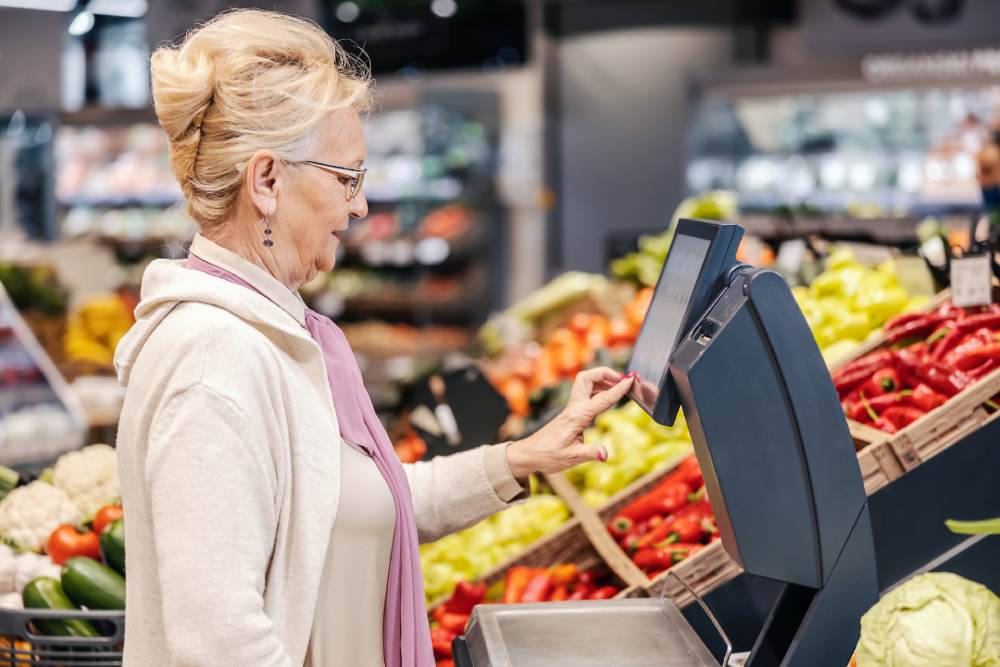In grocery retail, customer engagement is the key to a brand’s success. It affects how loyal customers are, how often they spend, and whether they recommend the brand to others.
Creating engaging experiences with your brand requires thoughtful, personalized engagement strategies delivered across all your selling touchpoints. To do so, you need the right technology stack.
Personalize the Experience
Grocery retailers need to personalize the experience to increase engagement and grow loyalty. According to research, personal experiences are often associated with a 1 to 2 percent lift in total sales for grocery stores. In addition, repeat customers spend up to 67% more than new customers.
To deliver a truly individualized customer experience, the best grocery loyalty programs must collect real-time shopping habits and preferences data. This information can be used to provide relevant and timely product recommendations that drive engagement and loyalty.
One way to increase engagement is leveraging gamification to incentivize loyalty activities and boost program participation. For example, grocers can use a points system that allows shoppers to earn rewards for every dollar they spend or offer an additional bonus after a minimum amount is paid.
Additionally, grocers can encourage their loyal customers to act as brand ambassadors. They can use a variety of tactics to recruit these advocates, such as in-store signage, email marketing, and social media. In return, brands can reward these ambassadors with assigned gift cards, trackable coupons, and custom landing pages.
Make It Easy
Grocery loyalty programs have to offer a holistic customer experience. Whether customers buy online, in-store, or through an app, they expect a seamless transition between these channels and receive benefits tailored to their unique needs and preferences.
Point and reward mechanics are standard in the grocery industry and offer a simple way to drive engagement by incentivizing repeat purchases through a redemption system. However, loyalty rewards incorporating gamification elements like unlocking options, progress feedback, and goals can increase participation by up to 2x.
Identify which communication channels your customers prefer and promote loyalty program offers on these platforms. For instance, encourage your loyalty app and its benefits on Instagram or Facebook while promoting discounts on TikTok to your millennial audience. In addition, you can use your customer’s data (like purchase history and loyalty tier) to curate their online shopping cart and send personalized promotions.
This will reduce cart abandonment and deliver a customized experience that increases relevancy and builds loyalty. Cybersource’s unified token management service enables this by recognizing customers across all global payment types, brands, methods, channels, and devices.
Make It Fun
Loyalty programs are a great way to engage customers, but they’re only successful when they make it fun and exciting. A simple example is offering new joiners a welcome promo code or discount on their first shop. Another approach is to reward members for opening the app or using their card at the point of sale. This creates a sense of anticipation that can boost customer loyalty over time.
A prime example is a program that offers members exclusive grocery discounts on their purchases and other benefits like streaming video and music and free shipping. Similarly, it rewards its members with PC Optimum points that can be redeemed for exclusive products and services, like free food delivery or a stylish branded coffee mug.
Another fun strategy is to allow customers to earn rewards by completing social activities like leaving reviews or comments or answering questions in your user Q&A section. This activity can help you build a 360-degree profile of your audience, including their unique preferences and purchasing patterns.
Make it Convenient
The convenience factor is a top consideration for shoppers, with 66% willing to pay more. Adding convenience can help grocery and food & beverage companies stand out from competitors, but it requires more than just a fast checkout process or free shipping.
One way to do this is through a points-based loyalty system, where customers earn rewards for every purchase and can redeem them for discounts or free products. This simple structure incentivizes repeat purchases and adds an element of gamification to the experience.
Another way to make a loyalty program more convenient is through mobile integration. With this, retailers can give customers a more personalized experience by providing them with meal planning, shopping lists, and wellness tips tailored to their dietary needs. Customers can also select a local school or charity to support through loyalty rewards, increasing their sense of connection and fostering loyalty.
Make it Meaningful
Loyalty programs can be an excellent source of data that helps grocery and food & beverage businesses personalize offers to their customers. These insights can improve the customer experience, enhance engagement, and foster brand loyalty.
However, most grocers need to take advantage of the data they can gain from their loyalty programs and rely on cookie-cutter discounts and coupons. Providing incentives to loyal customers through loyalty program tiers based on annual spending or frequency of visits is an effective way to differentiate offers and provide more personalized benefits.
Another strategy is to promote the program through multiple channels that resonate with different audience segments. For example, Instagram and TikTok are popular channels with younger generations, while WhatsApp may be more beneficial for older shoppers. It is also essential to recognize each channel’s strengths and limitations and tailor the messaging to each platform.



